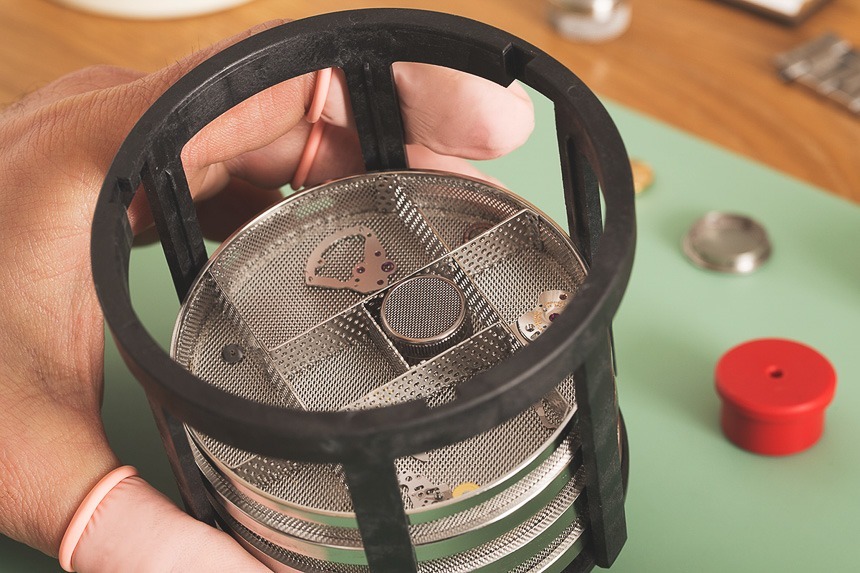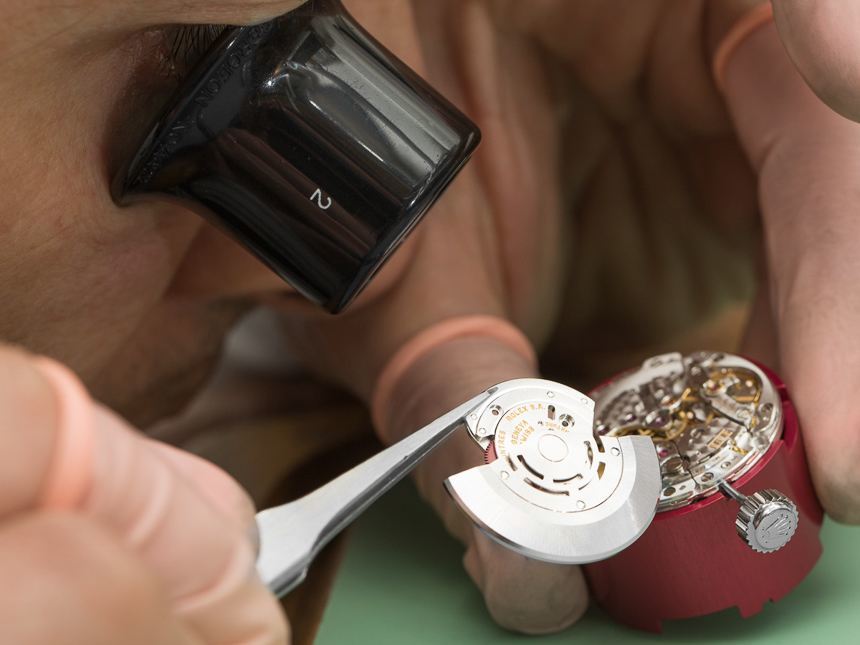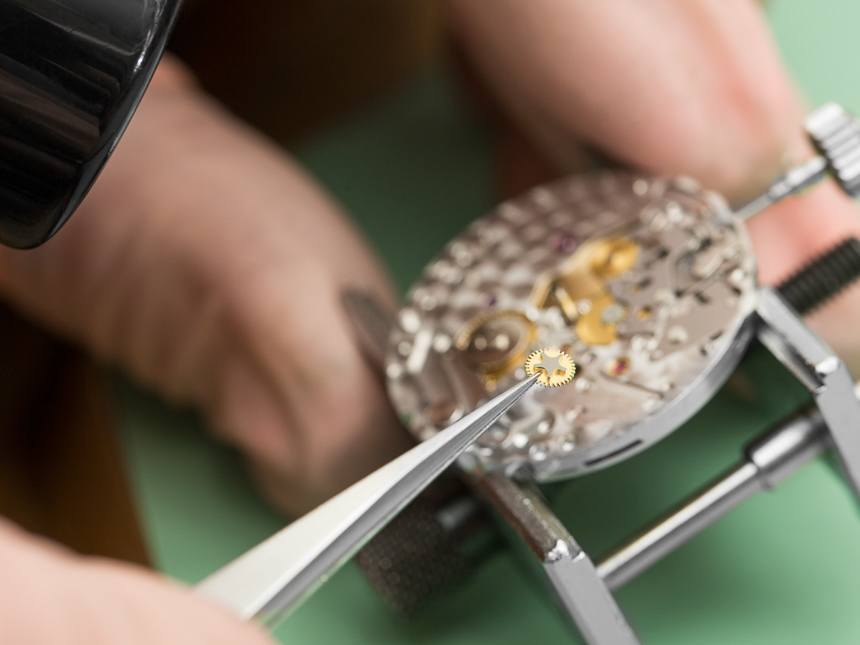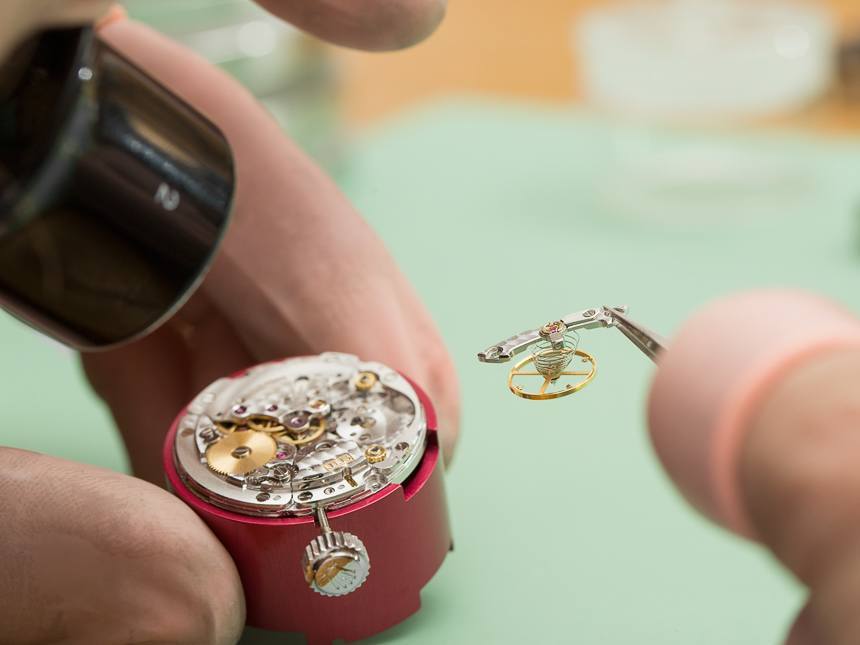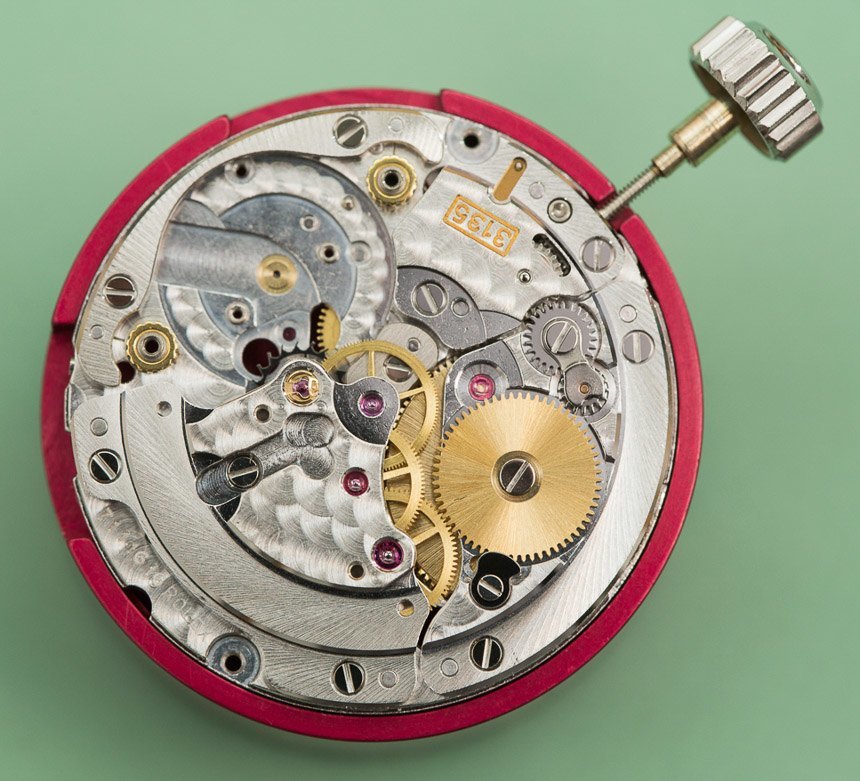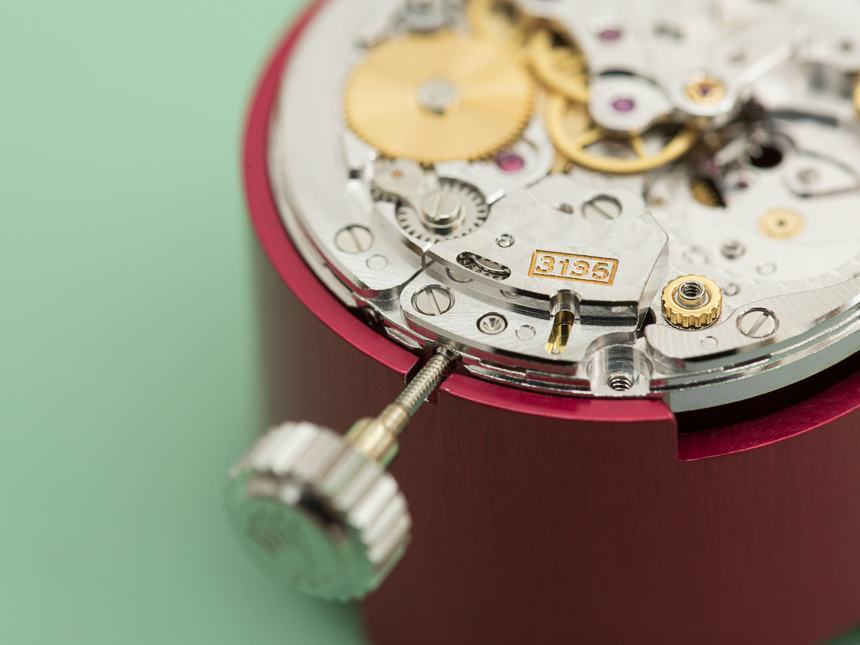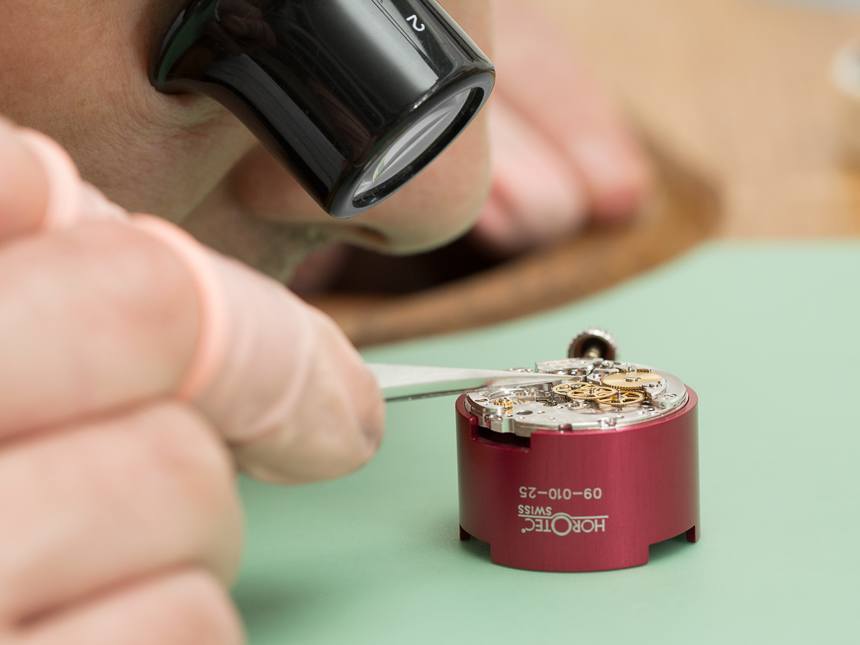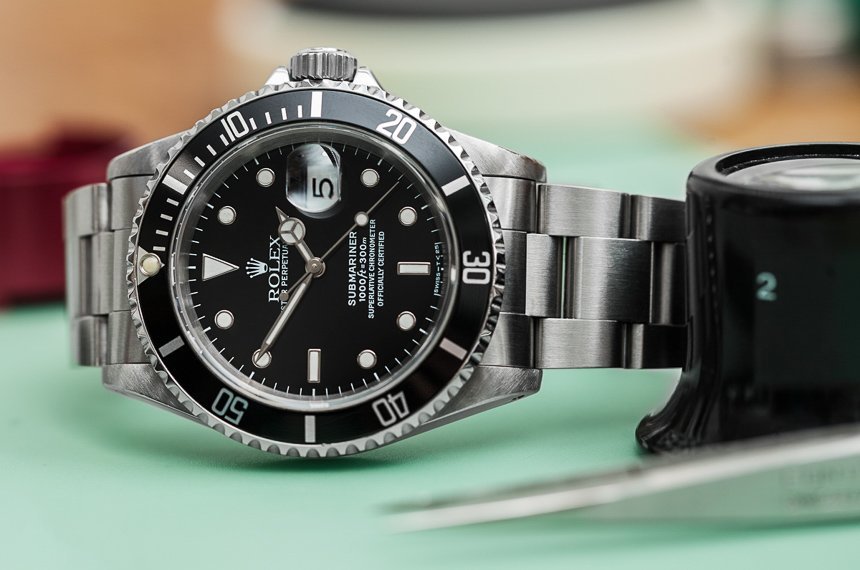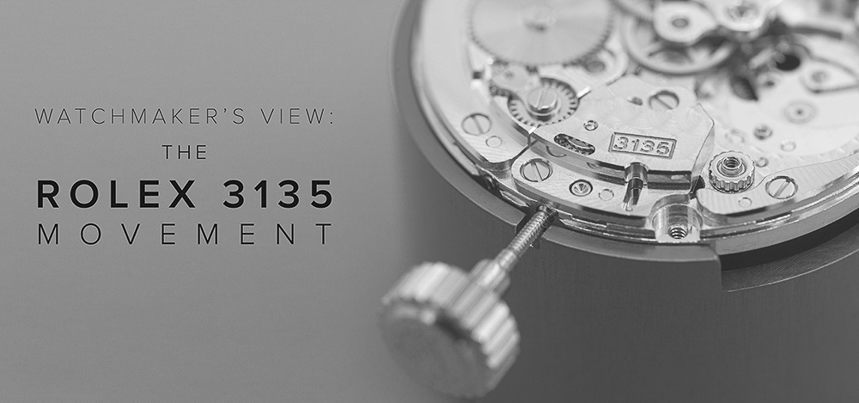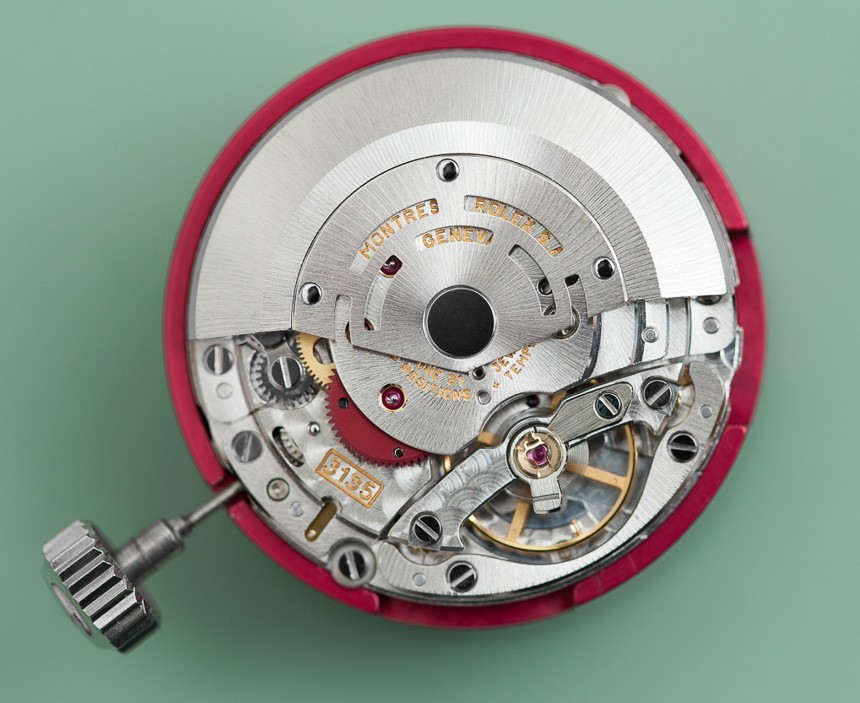 Hugh Taylor: But you said you preferred Rolex overall?
Hugh Taylor: But you said you preferred Rolex overall?
Mickey Nolan: Yeah, it’s a matter of taste, really, but there are some small differences. Rolex movements are generally very consistent in how much time they gain or lose each day. For me, the quality really is better in a Rolex. Take the Helium valve, for example. In the Omega divers, it’s screwed on and secured with Loctite to seal the valve, it can be really tricky to replace this. It works fine, of course, but I don’t think securing it with adhesive is ideal.
Or there’s the date function. The Rolex 3135 date ticks over instantaneously. The date mechanism is on a spring; at twelve o’clock, it jumps. An ETA or Omega might change gradually, at one second before or after. Yeah, it’s not majorly important, but it’s the little differences that add up, you know.
Hugh Taylor: What about the difference between the Rolex 3135 and, say, an ETA movement?
Mickey Nolan: Well, there’s a lot of difference there!
Hugh Taylor: Such as?
Mickey Nolan: I’ll give you a couple of examples.
First, there’s the finishing. Many parts are rhodium plated, so they look fantastic, you can see they’re a lovely milky color. Also, edges are chamfered or beveled, and surfaces are polished. All this makes it ever so slightly easier to service. Easy to service means happy watchmaker. This is something Rolex take into account, and believe me, that’s a good thing!
Then, there’s the steel. Rolex swapped all their steel to a different type about 15 years ago. The new steel is more resistant to corrosion and finishes very well. No one else uses it, probably because it would mean changing all your tool bits too, and that’s a very expensive change to make.
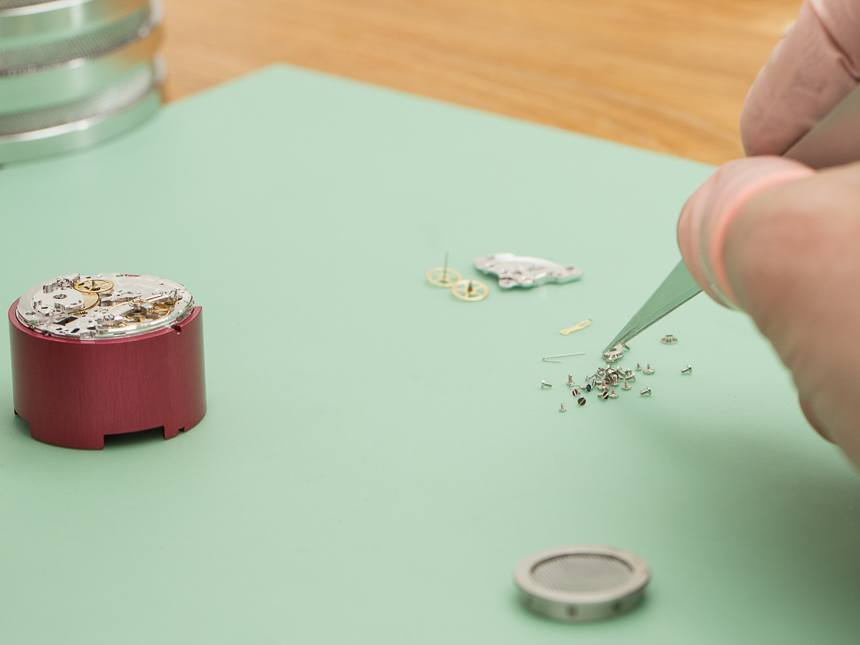
Another major difference is the accuracy. This is mainly due to the balance in the 3135. Rolex and other companies – Patek, for example – use a “free sprung balance.” The difference being the balance bridge in the ETA movements has two pins that the hairspring breathes through. You can move the pins with a regulating arm to adjust the timekeeping. In the free sprung setup you adjust Microstella screws on the inside of the balance rim, which speed up or slow down the balance due to the inertia in the balance — think of a ballerina in a pirouette, she brings her arms in closer in order to speed up her spin. This is easier to adjust and doesn’t restrict the hairspring, which means more accurate timekeeping.
Hugh Taylor: That sounds good. You mention Patek Philippe, how does the Rolex 3135 line-up alongside a Patek movement, then?
Mickey Nolan: Well, again, it’s a totally different ball game. Patek movements are often extremely complicated, and all the parts are handmade. This is why they’re so much more expensive. You can argue that this means they’re better, but I think the fact that Rolex use so much machinery is not necessarily a bad thing. Rolex claim to use machinery only where a machine does a better job than a human. I think this makes sense, and it means consistency too, which is great from a watchmaker’s point of view.
(Mickey is now taking out the mainspring.)
You have to be careful here, because if it springs out, it could blind you. It would fly around the room. Generally, we just swap the mainsprings instead of trying to work them, but it needs to be the right one with the right strength for the watch.
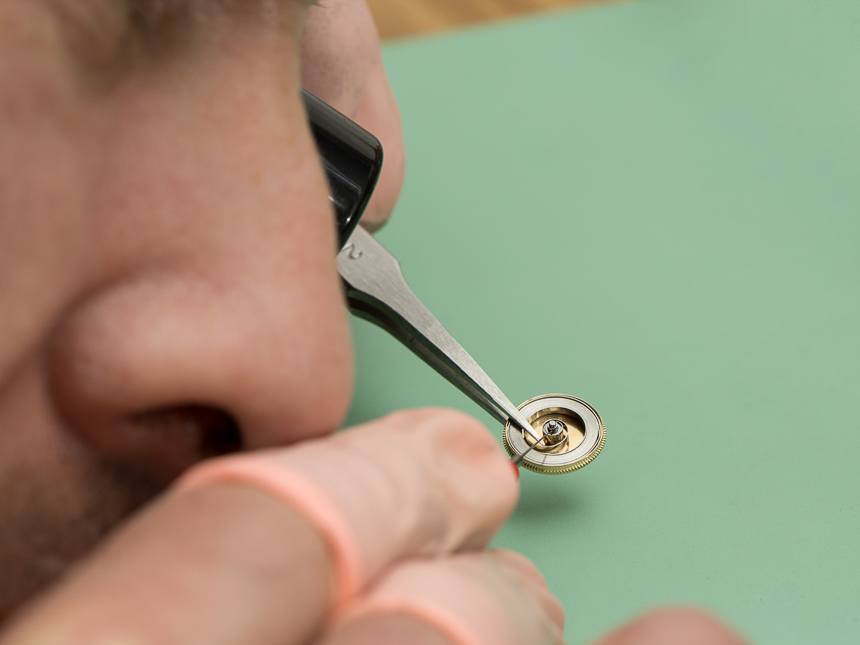
You see the fish tail at the end of the spring? It has two pieces, so it slips on the inside of the barrel. If this was just a wind up mechanical watch, there would be a piece that would attach to the inside of the barrel, and it wouldn’t be slipping, because you wind it, and it gets tight. This, you can keep on winding, and it’s not going to break the main spring, it just keeps slipping on the inside.
So if you’re wearing it, it’s always going to be fully wound, generally, if you’re quite active, that is. Some older gentlemen come in and go, “It’s not keeping time.” So, I ask, “Well, how mobile are you these days?” Usually the watch is actually working fine, but they’re… the watch isn’t actually winding all the time, you know.
Hugh Taylor: Haha, yeah, I know. Many Submariners come at different prices, are the movements any different?
Mickey Nolan: No. They use the same movements, but they might have different case materials.
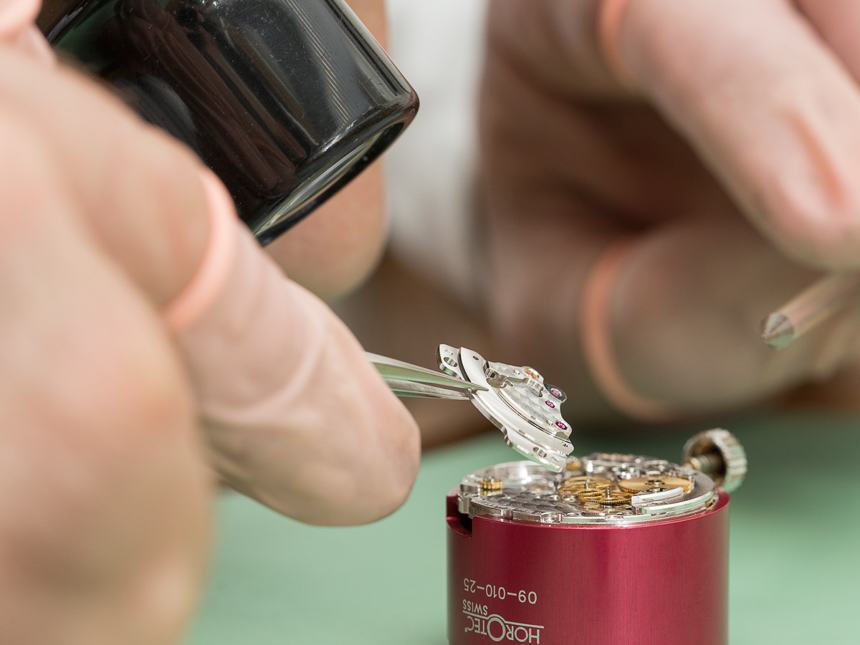
Hugh Taylor: How have the Sub movements changed over the years?
Mickey Nolan: There may be minor tweaks and upgrades to individual parts, but the movements are pretty much the same. The main difference is the new steel.
(Mickey shows me what happens inside the stripped down movement as you pull the crown into its different positions, activating different wheels.)
A lot of the time, you see a watchmaker with their ear to the watch when they’re winding it. They’re trying to work out whether it’s fully wound or not. They’re listening out for the end of the spring, the fishtail, slipping inside the barrel, it’s a very faint noise, but we know what to listen for. If you’re testing it and it’s not fully wound, then it will give you a wrong reading. Then we test it for about 24 hours to see if it’s stable. If not, then something will need adjusting, often the mainspring.
(The watch is now a shell. All the parts are stored away in tiny compartments.)
Now it all gets cleaned. Afterwards, I check the parts for wear or bruising. Then, I oil all the teeth and the jewels. Generally, a clean and oiling is enough. I’ll only replace parts that really need replacing. Rolex can be pretty generous with dishing out new parts.
(Mickey shows me the oiling tool, it’s as sharp as a pin. He tells me one dip can oil 20 teeth.)
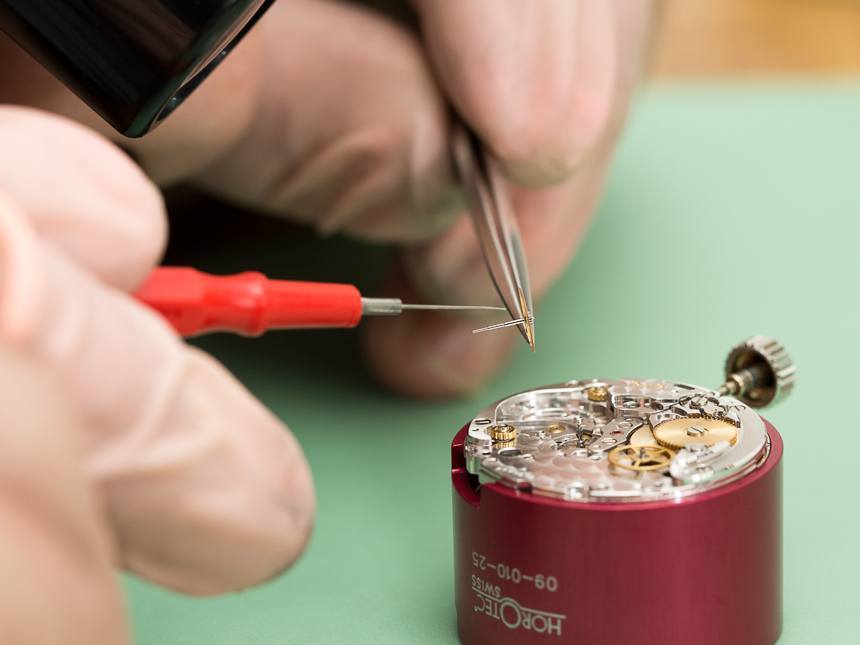
Hugh Taylor: I bet. Which parts are most often replaced?
Mickey Nolan: The mainspring and the second wheel; the second wheel takes a lot of power.
Hugh Taylor: How much do pieces cost?
Mickey Nolan: Prices vary. A mainspring could cost you £25. A new hairspring will cost you about £150, as you have to buy the wheel with it. They’re very delicate — if a watchmaker doesn’t know what they’re doing, they’ll break it.
(End interview)
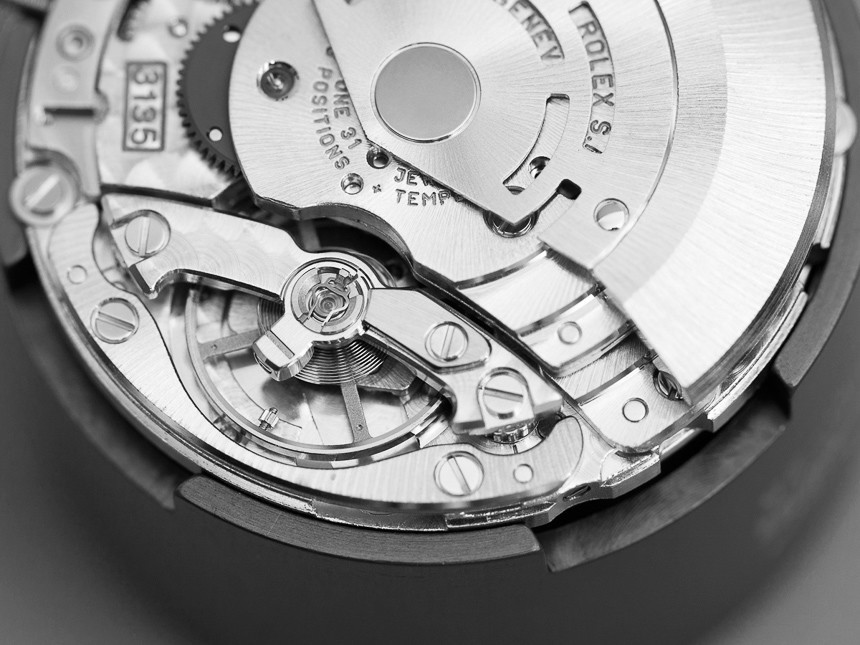
Mickey put the parts in the ultrasonic cleaner, and I left him there. All in all, I was with him for about two hours while he gave me a lesson on the complex workings of a watch. I came away with a huge appreciation for the intricacy of the movement, and also the difficulty of his job, which, according to him, usually pays about the same as a plumber.
As well as now having a far deeper appreciation for a Rolex movement, I couldn’t get over the huge margin for error when working on one of these. One small slip, and it’s going to cost a fortune. Not to mention the time it takes to get the parts. I asked Mickey about this a few times, he told me stories about finding parts in his eyebrows or in his shoe a few days later, “I mean, one sneeze, and you’ve potentially lost £500.”
Written by Hugh Taylor, editor of Xupes Magazine; photography by Owen Davies, Xupes.

